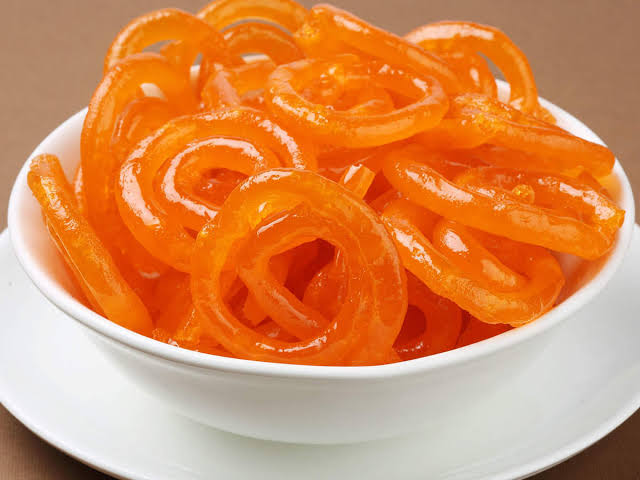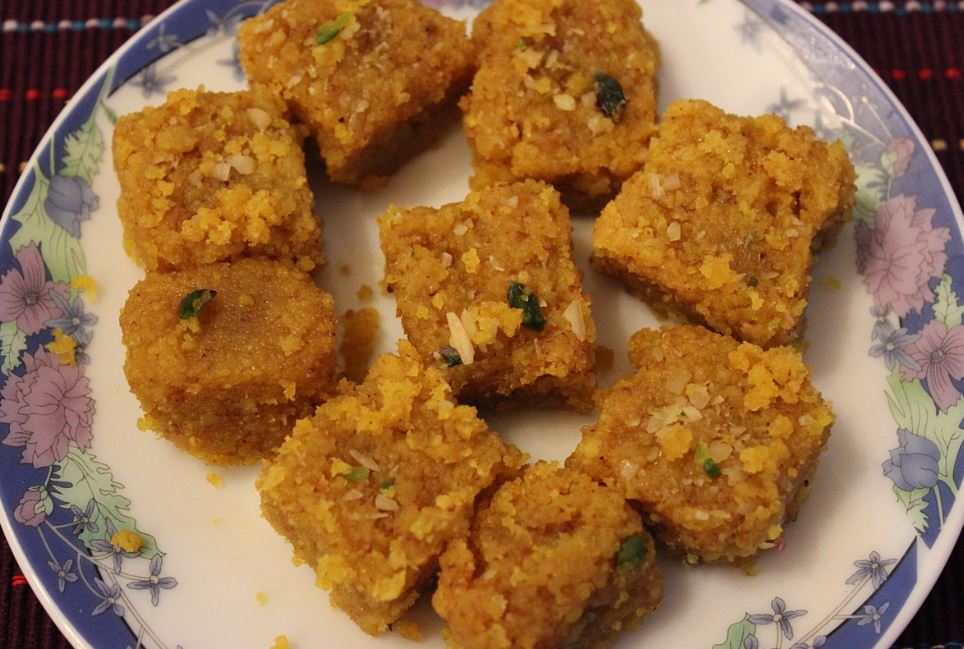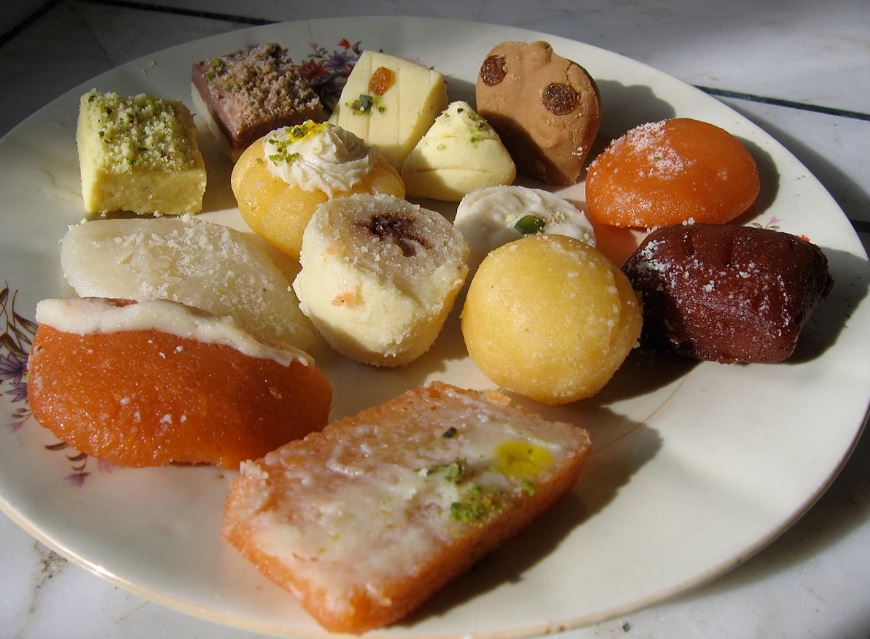India is a country with a rich cultural diversity and numerous customs. It is a nation with numerous diverse ethnic groups, cultures, cuisines, and delicacies. Mithai is the name for sweets. In Indian cuisine, mithai is a crucial component. Indians are renowned for their distinctive culinary tastes and adventurous eating habits.
Sugar, milk, flour, and condensed milk are key ingredients in the dessert known as Indian sweets. Although the ingredients used to make these sweets differ depending on the location, there is certainly one thing that unites this huge nation’s length and breadth: every Indian’s fondness for these vibrant sweets.
Indian desserts are as diverse and fascinating as their culture. There are far too many sweets in India to mention them all, yet some desserts transcend geographical boundaries and find a place in the hearts of all Indians.
Take a look at this list of the top 10 most popular desserts in India and taste them all.
Khaja
Indian delicacy known as khaja is made with a dough made of flour, sugar, and ghee and deep-fried in oil till golden and crisp. Depending on the geographical variant of the recipe, khaja may occasionally be steeped in sugar syrup after preparation.
One of the main courses at many North Indian wedding feasts is this delectable dessert. Khajas come in a variety of regional variations, and those from Silao and Rajgir are distinguished by their puffiness while those from the coastal region of Andhra Pradesh are dry on the outside and packed with sugar syrup on the inside.
Jalibe

Jalebi, also known as zulbia, is a popular delicacy that originated in Persia but has since become popular throughout the Middle East, India, and Asia. In its simplest form, this sweet dish is made by mixing flour with yogurt or ghee, baking soda, or yeast to make a batter that is then poured straight into the hot oil in circular patterns.
The outcome is a crisp treat that is then covered in a rich syrup that may be spiced with cardamom, rosewater, saffron, honey, orange blossom water, or any combination of these. Zulbia is a festive dish that is served in both Iran and India. It is frequently topped with chopped pistachios or saffron threads.
Falooda
Falooda is the name of a cool Indian dessert made of thin falooda noodles, which are typically made from cornstarch, sago, wheat, or arrowroot, and other ingredients like tapioca pearls, jelly, rose syrup, milk, and soaked saba (sweet basil) seeds.
The components are often piled in dessert glasses, and occasionally the entire dessert is topped with ice cream, dry fruits, or chopped nuts. The dessert can also be leisurely sipped while being eaten with a spoon. Despite being consumed all over India, falooda has its roots in ancient Persia, and a dish quite similar to it is still consumed there under the name faloodeh.
Laddu
The many types of flour used in this classic Indian delicacy are combined with sugar and shortening before being formed into balls. Laddu is an Indian meal that comes in a wide variety and is made with a wide variety of ingredients.
Various kinds of legume flour, most frequently chickpea flour, wheat flour, and even coconut flakes, can be used to make tiny laddu balls. To add sweetness and change the flavor, dried fruits and nuts are frequently used. Flour and jaggery were the main ingredients used to make this traditional Indian sweet.
Barfi

Barfi is an authentic Indian dish that resembles fudge, despite the fact that its name is Persian in origin. It is a part of a larger category of Indian sweets referred to as mithai. The word barfi, which refers to the aesthetic qualities of this dish in its straightforward, basic form, means snow and ice in Persian and Urdu.
The most popular ingredients added to the base are nuts, typically pistachios, cashews, and peanuts. It is produced with a base of condensed milk solids (khoa or khoya), granulated sugar, and ghee. However, some regional varieties also contain fruits, saffron, rose water, gram flour, or almonds.
Ras Malai
White cream, sugar, milk, and chhana, a type of cardamom-flavored paneer cheese, are the main ingredients in the classic Indian dessert known as Ras Malai. The dish frequently includes extras such almonds, cashews, and saffron. Ras Malai, a dish with West Bengali roots, is occasionally compared to a thick cheesecake without a crust.
The terms ras, which means juice in Hindi, and malai, which means cream, are combined to give the delicacy its name. Usually topped with cardamom seeds or dried fruit, it is served cold. The festivals like Holi and Diwali are when this delectable treat is most in demand.
Rasgulla
Like many other milk-based desserts from India, Rasgulla is a classic sweet that is typically offered at the conclusion of a meal. It is made from semolina dough and chena paneer dumplings that are cooked together in a sweet syrup. There is a contentious argument over where the dessert’s origins actually lie, with both West Bengal and Odisha claiming to be its birthplace.
While the people of Odisha assert that it has been served to Lord Jagannath for generations, Bengalis assert that rasgulla was created as a consequence of numerous culinary experimentation in the state. The majority of culinary historians concur that the reality lies somewhere in the middle.
Kulfi

Traditional Indian ice cream known as kulfi is created by simmering entire milk over low heat. Although the volume is reduced as a result of the prolonged simmering, the flavor—which is wonderful, nutty, and caramelized—more than makes up for it. The use of traditional, specialized molds with tight-fitting covers gave the ice cream its distinctive, conical shape.
Although some chefs prefer to flavor their kulfi with fruits like berries, it is typically prepared with traditional Indian ingredients like pistachio, rose water, and saffron. Kulfi is thought to have been created in the Mughal Empire era by the original inhabitants of the Himalayas.
Gulab Jamun
Milk solids are used to make the dessert gulab jamun, which is then formed into balls, deep-fried in ghee, and served. The balls are then dipped in a sweet mixture that has saffron, green cardamom, and rose water as flavors. To enhance the flavors of gulab jamun when it is served, dried nuts are frequently decorated.
Gulab, which means rose, and jamun, which alludes to the purple-hued jamun berry fruit, are the two terms from which the dish’s name is derived. The classic Arabic dessert luqmat al-qadi, which gained popularity during the Mughal Empire when Indian chefs at the palace kitchens altered their cooking by fusing the just acquired Persian ingredients with their own Hindu flavors, is thought to be the source of the dessert.
Kheer
A traditional Indian delicacy known as kheer or payasam is a creamy rice pudding that is prepared in many different ways all over the nation. Although it can be eaten at any time of the year, it is a common dish at many Indian ceremonies, festivals, and festivities.
Kheer is created by boiling rice, wheat, or tapioca with milk and sugar. Dried fruits, almonds, cardamom, and saffron can also be added for flavor. The Lord Jagannath Temple in Orissa is where the dessert is thought to have first appeared 2000 years ago.
Conclusion
Food is the one thing that India is famous for all over the world. One cannot help but fall in love with the mouthwatering cuisine found throughout the subcontinent since it is so deliciously distinct. Indians love methai, an Indian dessert, thus if you ask them what kind of cuisine they favor, all of their responses will have this in common.
